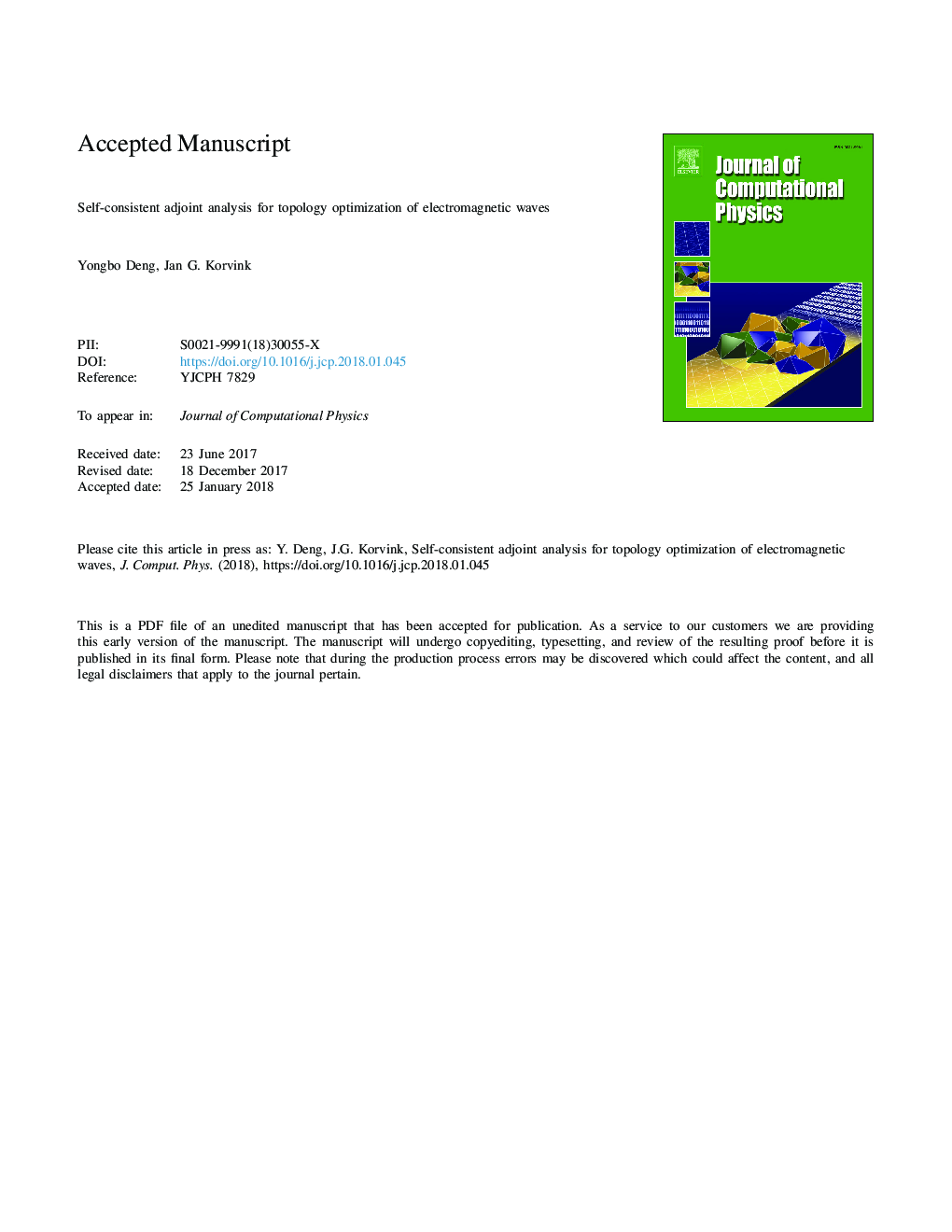| Article ID | Journal | Published Year | Pages | File Type |
|---|---|---|---|---|
| 6929022 | Journal of Computational Physics | 2018 | 29 Pages |
Abstract
In topology optimization of electromagnetic waves, the Gâteaux differentiability of the conjugate operator to the complex field variable results in the complexity of the adjoint sensitivity, which evolves the original real-valued design variable to be complex during the iterative solution procedure. Therefore, the self-inconsistency of the adjoint sensitivity is presented. To enforce the self-consistency, the real part operator has been used to extract the real part of the sensitivity to keep the real-value property of the design variable. However, this enforced self-consistency can cause the problem that the derived structural topology has unreasonable dependence on the phase of the incident wave. To solve this problem, this article focuses on the self-consistent adjoint analysis of the topology optimization problems for electromagnetic waves. This self-consistent adjoint analysis is implemented by splitting the complex variables of the wave equations into the corresponding real parts and imaginary parts, sequentially substituting the split complex variables into the wave equations with deriving the coupled equations equivalent to the original wave equations, where the infinite free space is truncated by the perfectly matched layers. Then, the topology optimization problems of electromagnetic waves are transformed into the forms defined on real functional spaces instead of complex functional spaces; the adjoint analysis of the topology optimization problems is implemented on real functional spaces with removing the variational of the conjugate operator; the self-consistent adjoint sensitivity is derived, and the phase-dependence problem is avoided for the derived structural topology. Several numerical examples are implemented to demonstrate the robustness of the derived self-consistent adjoint analysis.
Related Topics
Physical Sciences and Engineering
Computer Science
Computer Science Applications
Authors
Yongbo Deng, Jan G. Korvink,
